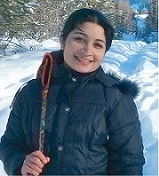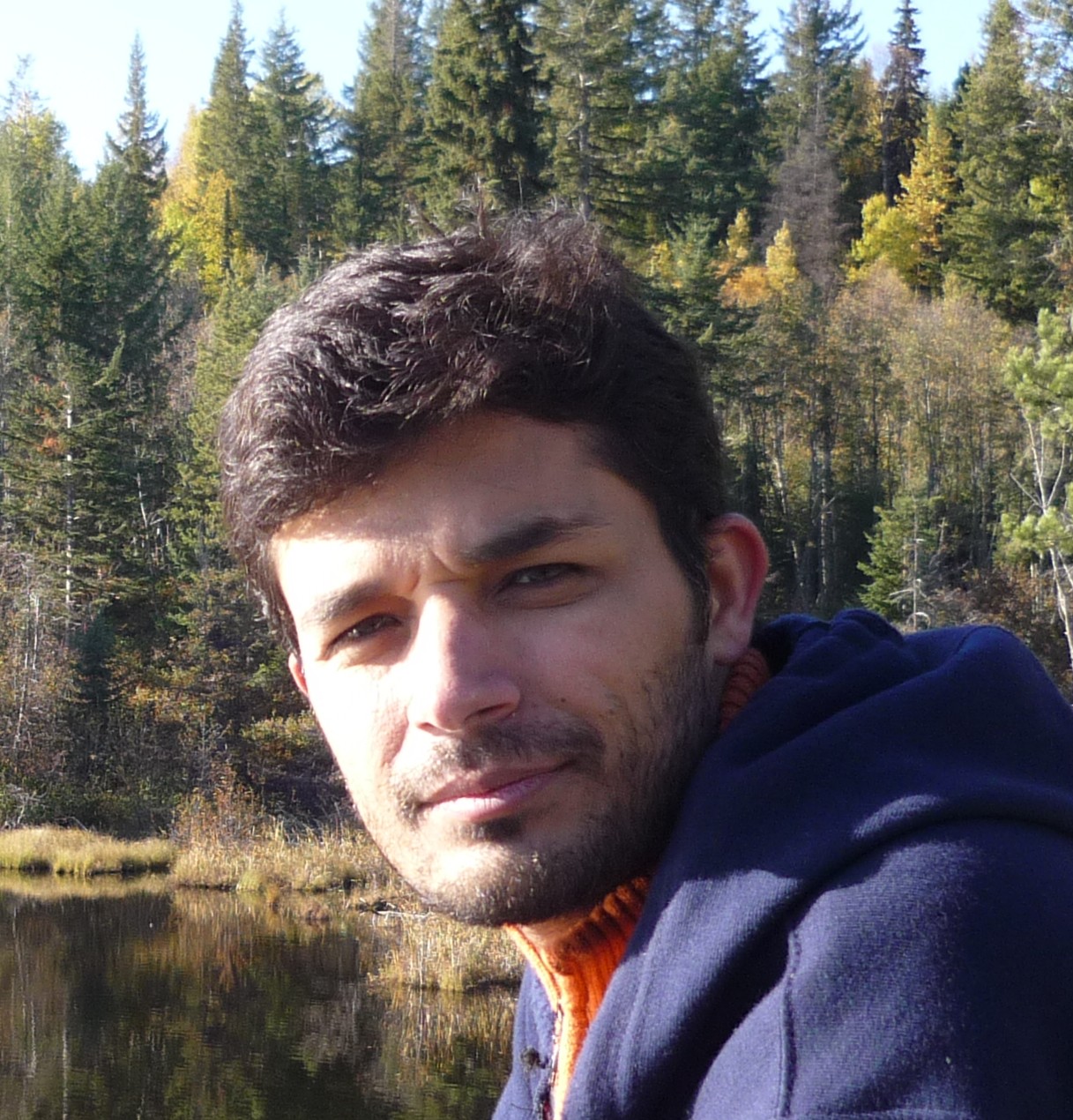| |
Snow and ice are ubiquitous features of the Canadian landscape. Thus the hydrometeorology of high latitude and elevation watersheds is largely controlled by processes involving snow and ice.
Although our understanding of snow and ice processes has improved in recent years, there remains some fundamental issues that need to be addressed. This is an especially urgent matter as the northern high latitudes are currently experiencing an unprecedented period of climate change (Serreze et al. 2000). Thus there is a great need to quantify the role of snowcover in the existing and in the future states of the surface energy and water budgets and to better comprehend hydrometeorological processes in the North.
Our research is therefore geared towards a better understanding of northern hydrometeorological processes and their impacts on the surface energy and water budgets. To accomplish this goal, a variety of methods and tools are used, including field observations, reanalysis datasets, remote sensing data, and numerical modeling. We are interested in both small-scale (from meters to a few kilometers) and large-scale (> kilometers) hydrometeorological processes.
Below are several research topics that have been undertaken by our group. For more information on the
PIEKTUK model and our previous work on blowing snow, please consult the following
page. Details of our ongoing field work at the Quesnel
River Research Centre (QRRC) and the Cariboo Mountains can be found at the
Cariboo Alpine Mesonet website.
Also listed below are the current members the NHG and funding sources.
Research Group
| |
 |
|
| |
| |
Mr. Abadzadesahraei is a PhD candidate and researcher at the University of Northern British Columbia (UNBC). Sina completed his master's
degree in water resources at the University of Algarve, Portugal, and received his bachelor's degree in Agricultural Engineering (Branch of
Irrigation) from Iran University. He has been involved with numerous municipality projects as an Advising Green Space Engineer designing green
space for public recreation areas and gardens. Sina moved to Canada in 2012 and has been involved with various research and has held several
positions. Sina joined an environmental consulting company as an environmental scientist for one year. He has had the opportunity to work on
numerous environmental site assessments, primarily at upstream and downstream petroleum facilities, but also on several residential, commercial,
and industrial lands.
In 2013, Sina joined the Northern Hydrometeorology group (NHG). He has been involved with several projects. He has been investigating the water
budget of Coles Lake, in northeastern BC. This work has been conducted in close collaboration with an industrial partner (Quicksilver, an oil and
gas company) and the BC Ministry of Forests, Land, and Natural Resources Operations. The goal of this research is to better understand water fluxes
at Coles Lake, including inputs such as precipitation and lake inflows and outputs. This research aims to determine what amount of water can be
safely extracted from Coles Lake for hydraulic fracturing ("fracking") by our industrial partner without damaging the environment.
Further to this, Sina has been subcontracted to conduct field experiments at Coles Lake with the support of the BC Oil and Gas Commission.
This experience has provided him with a strong skill set in the fields of hydrometeorological data acquisition and analysis, computer programming
and statistics, preparation of technical reports, and use of state-of-the-art field equipment and data loggers.
Furthermore, Sina's widespread academic and research background as well as his extensive field experience, have provided him with a solid
understanding of behaviour-based safety awareness, program implementation, and insight into quality data collection. Sina has been involved in
many high quality professions that emphasized strict confidentiality and professionalism such as the Director of Students Affairs and the PhD
representative in the Graduate society at UNBC. His research interests involve studying hydrology, watershed management and surface and ground
water modelling. He has had several full teaching assistant and lab instructor positions at UNBC. Sina is not only active in academics, as he is
also the karate instructor at the UNBC Sport Centre.
|
| |
| |
 |
|
| |
 |
Marco Hernández-Henríquez
|
| |
| |
Siraj has joined NHG in October 2014 as Post-Doc Fellow (PDF). His research background is in computer modeling and simulation. In his PhD, he was mainly using Global Climate Models (GCMs) to study seasonal climate prediction.
As a PDF in NHG, Siraj is focusing on the Fraser River basin (FRB) of British Columbia to analysis its hydrological impacts due to the anticipated future climate changes. He is using Variable Infiltration Capacity (VIC) hydrology model
to simulate key hydrological variables over FRB using climate change simulations of Coupled Model Intercomparison Project Phase 3 and 5 (CMIP3/5).
|
| |
| |
 |
|
| |
 |
|
| |
 |
|
| |
| |
Bunu Sharma is a MSc student of NHG since 2013, conducting research on "Contribution of snow to Hudson Bay river discharge". She holds
M.Sc & B.Sc. degrees from Tribhuvan University, Nepal. She has a keen interest in snow, hydrology and climate science.
Bunu's research is on the contribution of snow to Hudson Bay river discharge. Hudson Bay (HB) is an immense inland sea in northeastern Canada
with a total drainage basin of about 3.8 million km2 where approximately 30% of Canada's water drains. It contributes about 950 km3 yr-1 of
freshwater discharge to the Arctic Ocean (AO) that is nearly 1/5th of the total annual river runoff to AO. HB river discharge has experienced
changes in its timing and amounts over past decades. Changes in river input to HB impact sea ice formation in the basin that, in turn, affect the
climate of north-eastern North America. These changes may due to changing snow accumulation and ablation regimes across central North America.
The goal of her research is to quantify the contribution of snow to runoff generation in the HB drainage system during the latter part of the 20th
century and the early 21st century using the Snow water equivalent (SWE) data and the daily streamflow data for the major river basins draining
into the bay. The expected outcome of her research is the quantification of snowmelt contribution to the HB. Further, the study will evaluate the
possible impacts of climate change on the hydrology of the HB basin and discuss their implications on different sectors such as for hydropower
generation, potential consequences of the changes in the hydrological regime in HB local species like polar bears, ringed seals, and arctic
char.
|
| |
| |
 |
|
| |
 |
|
| |
| |
Originally Waqar belongs to Pakistan where he completed my Masters in Physics and undergrad in physics and mathematics. In 2009, he started PhD in Natural Resources and Environmental Studies (NRES), at University of Northern British Columbia (UNBC), Canada and graduated recently in December 2014. His area of specialization is Meteorology where he worked on global climate models data analysis using highly advanced statistical techniques. In 2013 Waqar managed to publish his paper in Journal of Climate titled “PNA predictability at various time scales”. The paper focused on actual and potential prediction skill and predictability of Pacific North American (PNA) Index from daily to seasonal time scale. The potential predictability source of PNA index is also explored as PNA index is teleconnected with El-Nino Southern Oscillation (ENSO) from monthly to seasonal time scale. Waqar’s second paper in PhD is to analyze the prediction skill and predictability of Madden-Julian Oscillations (MJO) in terms of comparison between CGCM and AGCM models ensemble forecasts. He is currently in process to submit this paper in Journal of Climate.
Waqar joined Canadian Canadian Network for Regional Climate and Weather Processes (CNRCWP) Post-Doctoral fellowship. His main tasks is to couple Canadian Land Surface Scheme (CLASS) to Canadian Regional Climate Model (CRCM version 6) and performing the sub-grid scale snow parameterization and using different elevation bands at each sub-grid. This will improve the snow simulation and snow albedo effect and can be useful in evaluating the hydrological changes in future climate in Nelson, McKenzie, Columbia and Fraser river basins
|
| |
Past Group Members
Sam Albers (Research Assistant, co-supervised with Dr. Ellen Petticrew)
Jason Burford (Research Associate)
Andy Clifton (Post-doctoral fellow)
Andrew Duncan (Field Assistant)
Bryndel Fell (Research Associate)
James Fraser (Research Assistant)
Pabitra Gurung (Ph.D. Student)
Marco Hernández-Henríquez (Research Assistant)
Kate Hrinkevich (Part-time Research Associate)
Ewan Jones (Part-time undergraduate field assistant)
Do-Hyuk Kang (Post-doctoral fellow)
Geoff Kershaw (Research Assistant)
Suin Lee (Undergraduate Research Assistant)
Abigail Lewis (Part-time undergraduate field assistant)
Shane MacLeod (Research Assistant)
Ben McGrath (Undergraduate field assistant)
Jake McQueen (Undegraduate Research Assistant)
Theo Mlynowski (Research Assistant)
Sara Ormenyi (Undergraduate Student)
Allan Padilla (Research Associate)
Ian Picketts (Ph.D. Student, co-supervised with Dr. John Curry)
Ian Picketts (Post-doctoral fellow, co-supervised with Dr. Margot Parkes)
Kara Przeczek (M.Sc. Student and Research Assistant)
Kabir Rasouli (Part-time Research Associate)
Darlene Sanderson (Post-doctoral fellow)
Jinjun Tong (Ph.D. Student)
Amanda Upshaw (Intern)
Tullia Upton (M.Sc. Student)
Derrik van Tol (Field Assistant)
Amir Yadghar (Research Associate)
Funding Sources
Canadian Foundation for Climate and Atmospheric Sciences (WC2N Network)
Natural Sciences and Engineering Research Council (Discovery and RTI Grants)
Social Sciences and Humanities Research Council
Canada Foundation for Innovation
Canada Research Chairs (in Northern Hydrometeorology)
British Columbia Knowledge Development Fund
UNBC
MITACS
Environment Canada's Science Horizons Program
Climate change and the water towers of western Canada
Mountains are often referred to as "water towers" as they receive a disproportionate amount of precipitation owing to topographic effects. They also store freshwater in the seasonal snowpack and in glaciers, with these reservoirs providing meltwater that becomes the source of many streams and rivers of western Canada. With growing demands for freshwater resources in a changing climate, there is an urgent need to better understand the role of these water towers in the water cycle of watersheds of western Canada.
The primary goal of this research program is to quantify the changing role of snow and ice in the water cycle of the Quesnel River Basin (QRB), located in the Cariboo Mountains of British Columbia (BC). We aim to establish long-term fluctuations, trends, and feedbacks in the hydroclimate of the QRB using a network of eight weather stations deployed in the area since 2006. These are located at elevations between 750 m and 2100 m, giving information on the air temperature, precipitation, and snow accumulation gradients in this remote region. This program will support the upkeep and expansion (to altitudes >2100 m) of the monitoring network to provide some of the highest, long-term weather stations in BC. This will also yield data on the state and fate of the region's seasonal snowpacks, as these are expected to recede at an accelerating rate with continued warming. This may lead to an amplification of climate change with elevation, due to the positive snow-ice/ albedo feedback on warming. Field data, including those from our sites, combined with satellite products will be used to assess the overall trends and fluctuations in snowpack conditions across the QRB. The sensitivity of snow accumulation and melt to trends to air temperature will be tested to see how it varies with elevation. We will track the timing of snow onset and melt dates, their relation to passages through the freezing/melting point and the ensuing hydrological responses. Placing this work in the larger context of the entire Fraser watershed will give crucial information on the evolution of western Canada's "water towers" in a changing climate.
Floods in the Nechako River Basin
The Nechako River drains 45,000 square kilometres of northern British Columbia (BC) and forms the second largest (by contributing area) tributary of the Fraser River, the province's greatest river by annual discharge at nearly 100 km3. The Nechako remains a highly productive salmon and white sturgeon river, with both fish species vital for local First Nations and other communities. Furthermore, freshwater extracted from the Nechako River and its tributaries is used in many industries within the watershed including agriculture, forestry, and mining. Despite its importance, recent streamflow variability and trends, including information on the occurrence of floods, across the Nechako River watershed are poorly known.
This project's main objective will thus be to examine the annual, monthly and daily discharge data to establish historical flood events along the Nechako River along its main stem and tributaries from 1920 to 2010. Data from a dozen gauges will be extracted from the Water Survey of Canada's Hydrometric Database (HYDAT). Using methods developed previously by the northern hydrometeorology group, hydrological extremes will be assessed at each of the hydrometric gauges. The analysis will first quantify the contribution of each upstream gauged area (nested sub-watersheds such as the Stuart, Nautley and Stellako Rivers) to the total annual discharge measured at Isle Pierre, BC (the furthest downstream gauge operated by the Water Survey of Canada) along with its interannual variability through correlation statistics. Emphasis will be given to the relationship between topography (e.g., elevation, land cover type, etc.), anthropogenic developments (e.g., the Kenney Dam), climatic conditions (e.g., air temperature and precipitation), and observed trends and fluctuations in annual, monthly and daily streamflow in the Nechako watershed. The role of large-scale teleconnections such as the Pacific Decadal Oscillation (PDO) and El Nino/Southern Oscillation (ENSO) on streamflow variability will also be examined. This will yield important information on historical flood frequencies in the Nechako River watershed and allow comparisons with model projections reported in previous studies.
Remote sensing of snow Since snow covers up to 40% of continental land surfaces in the Northern Hemisphere with significant temporal and spatial variations (Hall 1988), remote sensing of this surface feature becomes practical. Space-borne instruments have the advantage of providing global snow maps at high resolutions. Derived from a single source, this methodology also eliminates possible inconsistencies in measurement taking and archiving, and provides easy access to a global database of snowcover.
NASA's Earth Observing System (EOS) Terra and Aqua spacecrafts, launched in 1999 and 2002, respectively, each carry a Moderate Resolution Imaging Spectroradiometer (MODIS) instrument (Justice et al. 1998). Among other products, MODIS data in the visible and thermal infrared range are used to construct snowcover products. MODIS snow products are available at various spatial and temporal resolutions (Hall et al. 2002). Moderate resolution (5 km) products include 8-day and daily composite tile snow maps whereas at 0.5-km resolution, MODIS snowcover data are available on both regular grids or as a swath covering an area of about 2330 km by 2030 km.
Preliminary work focused on validating MODIS snowcover products for the Kuparuk River Basin of Northern Alaska. It is found that, for a wide range of conditions, MODIS compares well with Landsat imagery in detecting snow. However, current parameterizations for subpixel snow (e.g., Salomonson and Appel 2003) have some difficulty in detecting snow late in the melt period. Through detailed error analyses, we are able to remove these negative biases in the MODIS fractional snowcover estimates. In future work, MODIS snowcover data will be applied to determine the temporal evolution of snow areal depletion curves and to assess the role of subgrid-scale snow in the surface energy and water budgets of Arctic basins.
References
For a complete list of references see my reference list in the data section.
Top |
|




